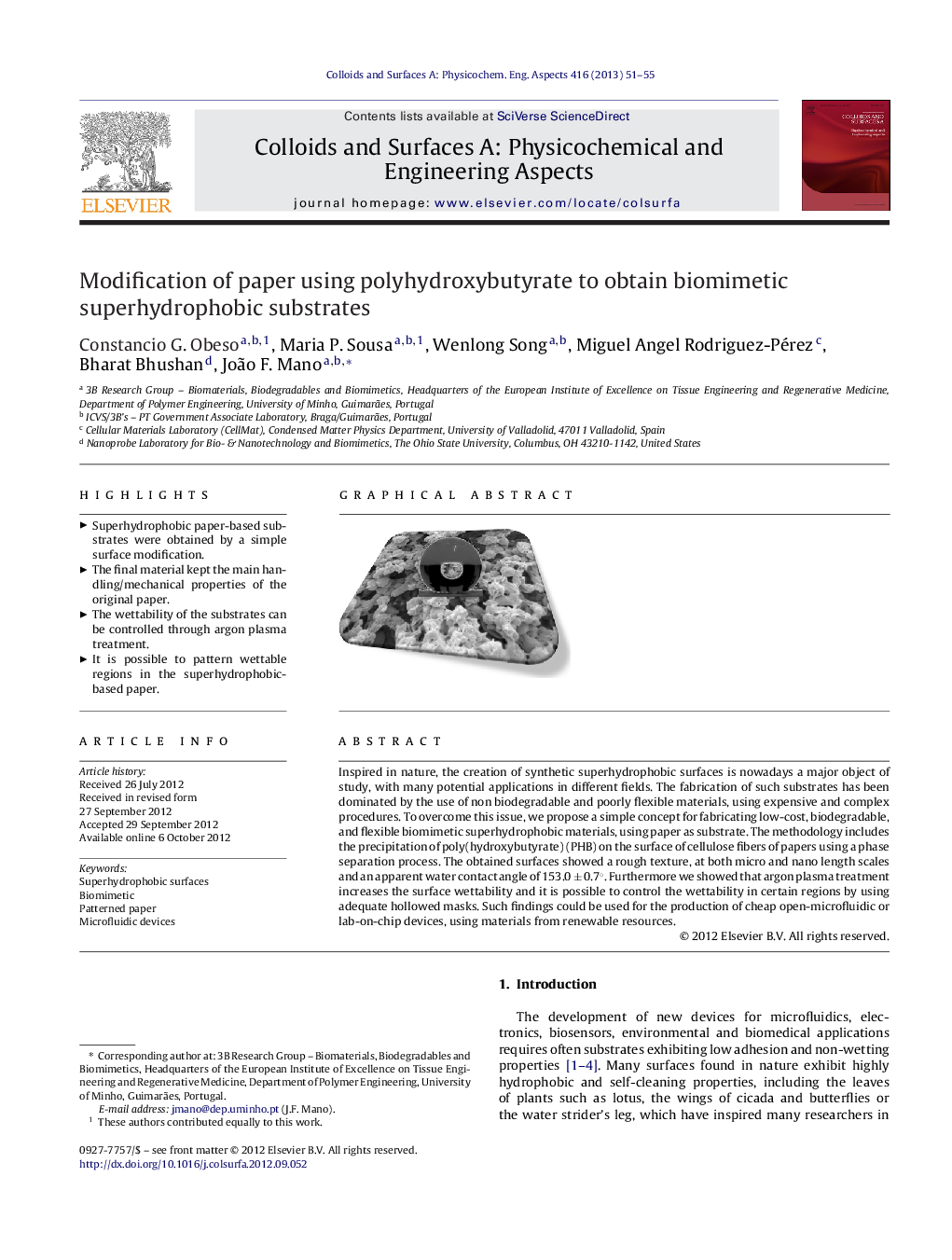| کد مقاله | کد نشریه | سال انتشار | مقاله انگلیسی | نسخه تمام متن |
|---|---|---|---|---|
| 593836 | 1453957 | 2013 | 5 صفحه PDF | دانلود رایگان |

Inspired in nature, the creation of synthetic superhydrophobic surfaces is nowadays a major object of study, with many potential applications in different fields. The fabrication of such substrates has been dominated by the use of non biodegradable and poorly flexible materials, using expensive and complex procedures. To overcome this issue, we propose a simple concept for fabricating low-cost, biodegradable, and flexible biomimetic superhydrophobic materials, using paper as substrate. The methodology includes the precipitation of poly(hydroxybutyrate) (PHB) on the surface of cellulose fibers of papers using a phase separation process. The obtained surfaces showed a rough texture, at both micro and nano length scales and an apparent water contact angle of 153.0 ± 0.7°. Furthermore we showed that argon plasma treatment increases the surface wettability and it is possible to control the wettability in certain regions by using adequate hollowed masks. Such findings could be used for the production of cheap open-microfluidic or lab-on-chip devices, using materials from renewable resources.
Figure optionsDownload as PowerPoint slideHighlights
► Superhydrophobic paper-based substrates were obtained by a simple surface modification.
► The final material kept the main handling/mechanical properties of the original paper.
► The wettability of the substrates can be controlled through argon plasma treatment.
► It is possible to pattern wettable regions in the superhydrophobic-based paper.
Journal: Colloids and Surfaces A: Physicochemical and Engineering Aspects - Volume 416, 5 January 2013, Pages 51–55